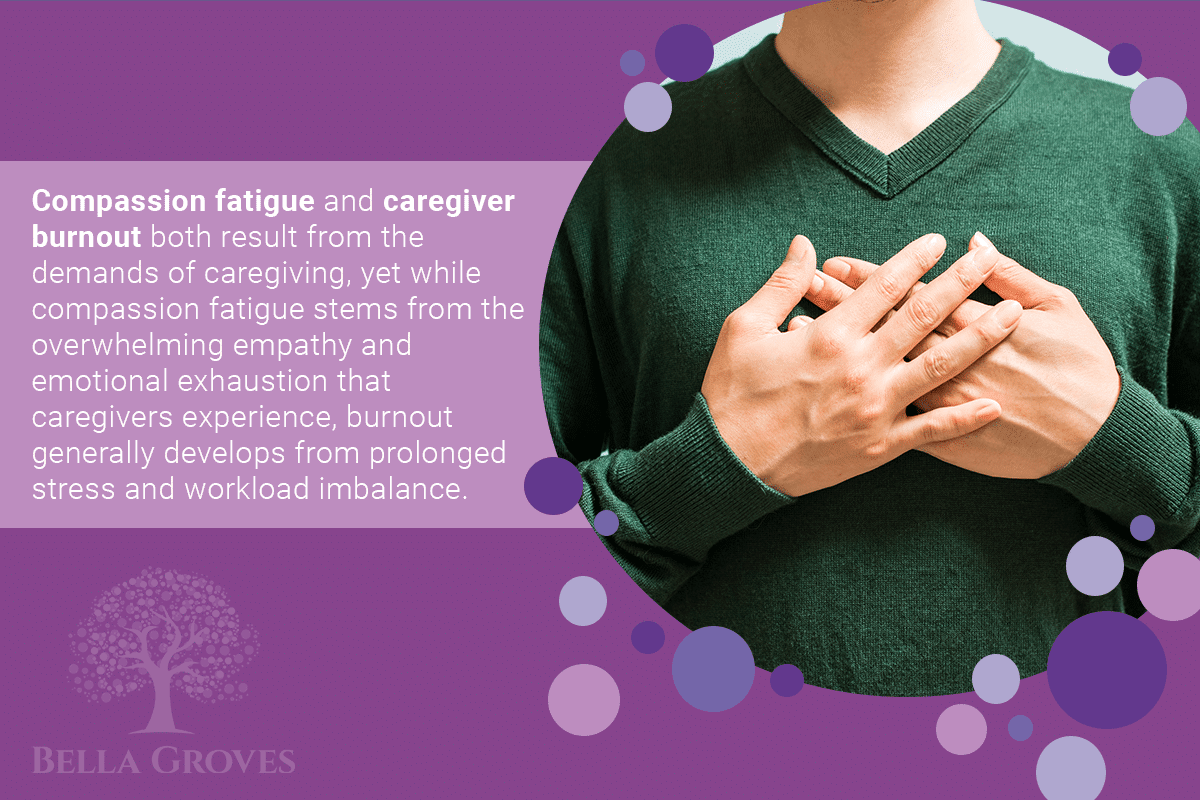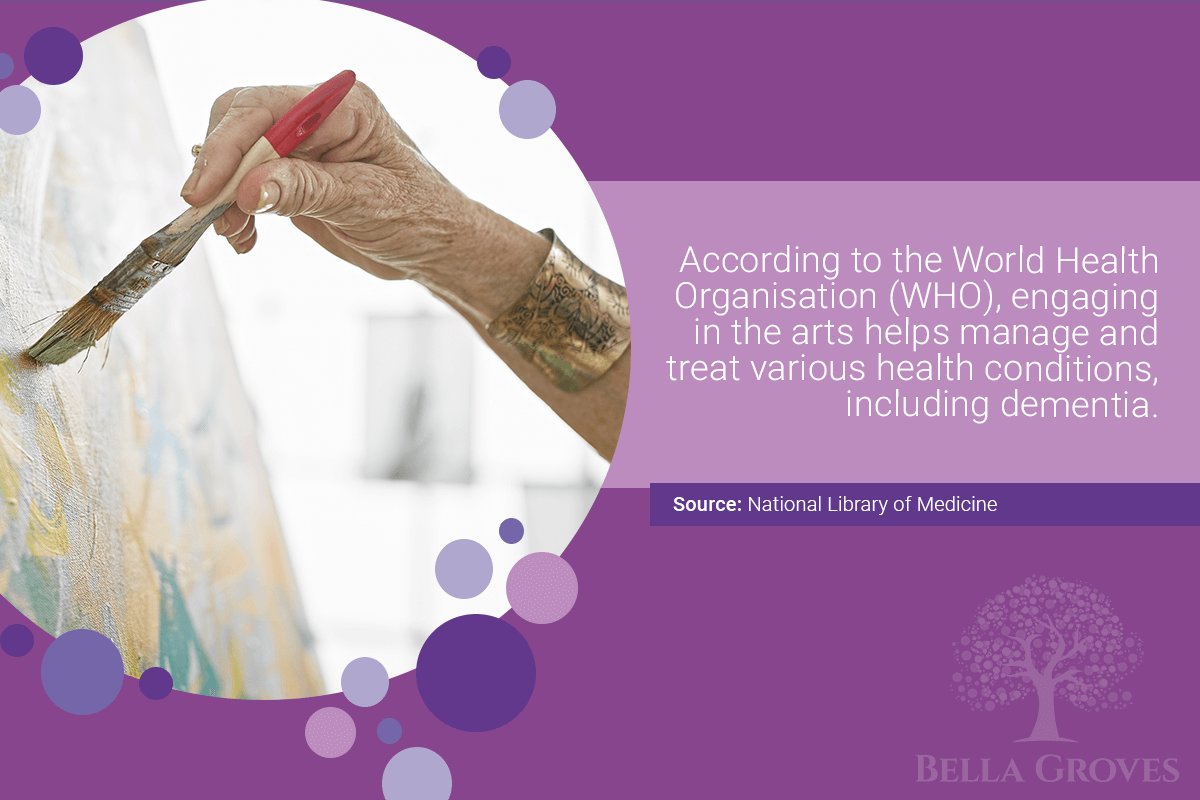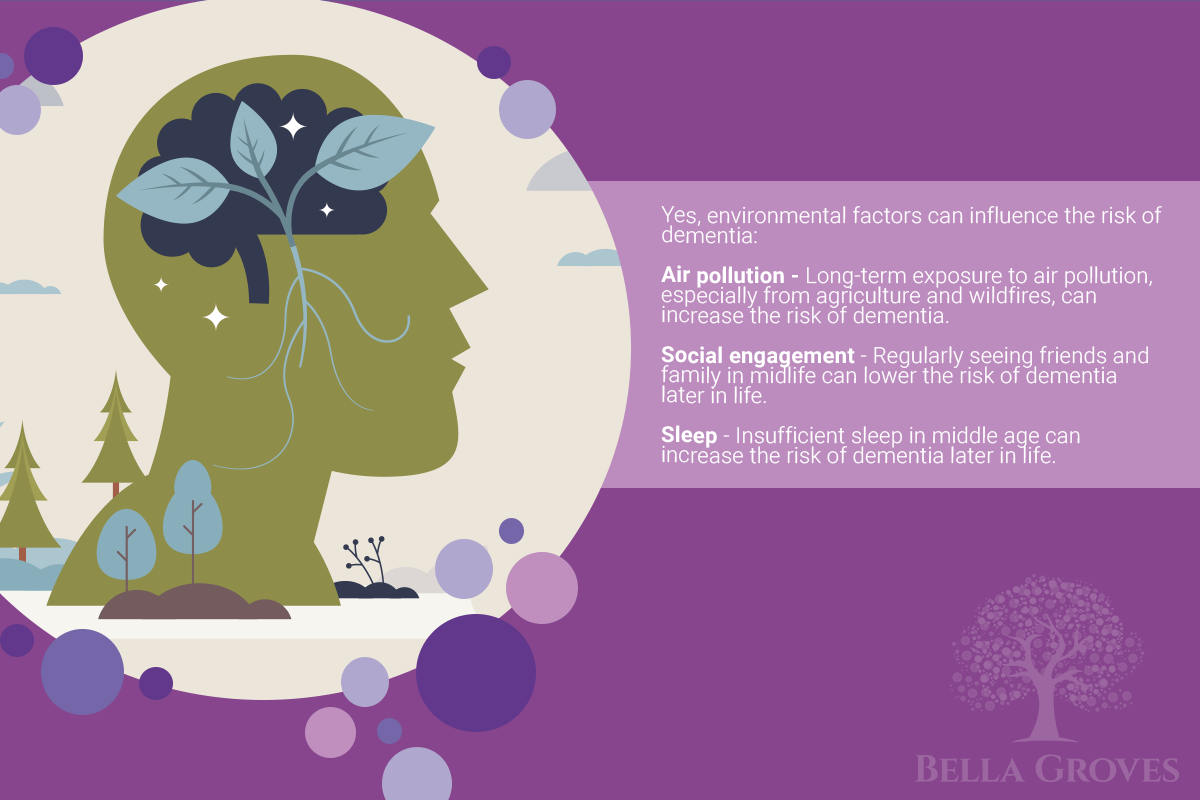
Compassion Fatigue vs. Caregiver Burnout
Being a caregiver is one of the most fulfilling yet challenging roles one can take on. It’s a labor of love, but as many caregivers know, it can also lead to emotional and physical strain.
Bella Groves offers specialized memory care in San Antonio to support dementia care partners and their families, and we want to ensure that you have the resources you need to succeed on this journey. Below, our team explores the differences between two common conditions that caregivers often face—compassion fatigue and caregiver burnout. By understanding these, you’ll be better equipped to manage your well-being while providing the best care possible.
Understanding Compassion Fatigue
Compassion fatigue is a form of emotional, physical, and spiritual exhaustion that arises when caregivers feel overwhelmed by the challenges those they love are facing. This phenomenon is often seen in healthcare professionals, social workers, and family caregivers who are constantly exposed to emotional pain.
Imagine a sponge soaking up water; at some point, it becomes saturated and can absorb no more. Caregivers can become emotionally saturated, making it difficult to continue providing compassionate care. This condition can manifest as feelings of hopelessness, decreased empathy, and a sense of dread about carrying out caregiving tasks.
Compassion fatigue doesn’t just affect one’s emotional health; it can also lead to physical symptoms like chronic fatigue, headaches, and weakened immune function. Spiritually, caregivers may find themselves questioning their beliefs or feeling disconnected from their sense of purpose.
Recognizing Caregiver Burnout
Caregiver burnout, unlike compassion fatigue, results from prolonged, unresolvable stress. It is the culmination of months or even years of caring for someone without adequate rest or support. This condition is characterized by physical, mental, and emotional exhaustion that leaves caregivers feeling drained and overwhelmed.
Caregiver burnout often develops gradually. Initially, caregivers might push through their tiredness, thinking it’s a temporary phase. However, over time, the constant demands and lack of respite take a toll, leading to burnout. Symptoms include irritability, loss of interest in activities once enjoyed, and persistent feelings of helplessness.
It’s important to recognize that caregiver burnout can have severe consequences, not just for the caregiver but also for the care recipient. When caregivers are burnt out, they are less able to provide quality care, which can affect the health and well-being of the person they are caring for.
See the Signs
Recognizing the signs of compassion fatigue and caregiver burnout is crucial for taking action early. Common indicators of compassion fatigue include feeling emotionally numb, experiencing irritability and mood swings, and struggling to concentrate.
On the other hand, symptoms of caregiver burnout involve suffering from chronic fatigue, withdrawing socially, and losing interest in hobbies that were once enjoyable. Being aware of these signals can help individuals or their loved ones seek support before it becomes overwhelming.
Impact on Caregivers and Care Recipients
Compassion fatigue and caregiver burnout don’t just affect the caregiver—they ripple through the entire caregiving experience. When caregivers are drained emotionally or physically, their ability to stay attentive and compassionate takes a hit.
This dip in care quality can trigger a host of adverse effects for the care recipient, like more frequent hospital visits, medication mishaps, and declining health. On top of that, tensions can strain the caregiver-care-recipient relationship, spinning a cycle of stress and dissatisfaction for everyone involved.
Coping Strategies
Thankfully, there are effective strategies to manage and prevent compassion fatigue and caregiver burnout.
Self-Care Practices
Prioritize activities that rejuvenate you, whether it’s a hobby, exercise, or simply relaxing with a good book. Regular self-care can help mitigate the effects of emotional and physical exhaustion.
Seek Support
Don’t hesitate to reach out to friends, family, or support groups. Talking about your experiences can provide emotional relief and practical advice. For example, joining a local caregiver support group can offer a sense of community and shared understanding.
Set Boundaries
Establish clear boundaries to protect your own well-being. This might mean scheduling regular breaks, saying no to additional responsibilities, or delegating tasks when possible.
Bella Groves is Here to Support You
Understanding and addressing compassion fatigue and caregiver burnout are essential steps in maintaining one’s well-being as a caregiver. By recognizing the signs, implementing coping strategies, and seeking support when needed, you can ensure that you continue to provide the best care possible for your loved ones.
If you’re feeling overwhelmed or simply wish to improve your caregiving experience, reach out to Bella Groves to learn more about our memory care in San Antonio. Our services include a Learning Center for skill-building, a Dementia Navigator for specialized guidance, and Residential Care for comprehensive support.
We invite you to contact us to learn how we can help you alleviate caregiver burnout and compassion fatigue, ensuring a healthier, happier caregiving journey.


